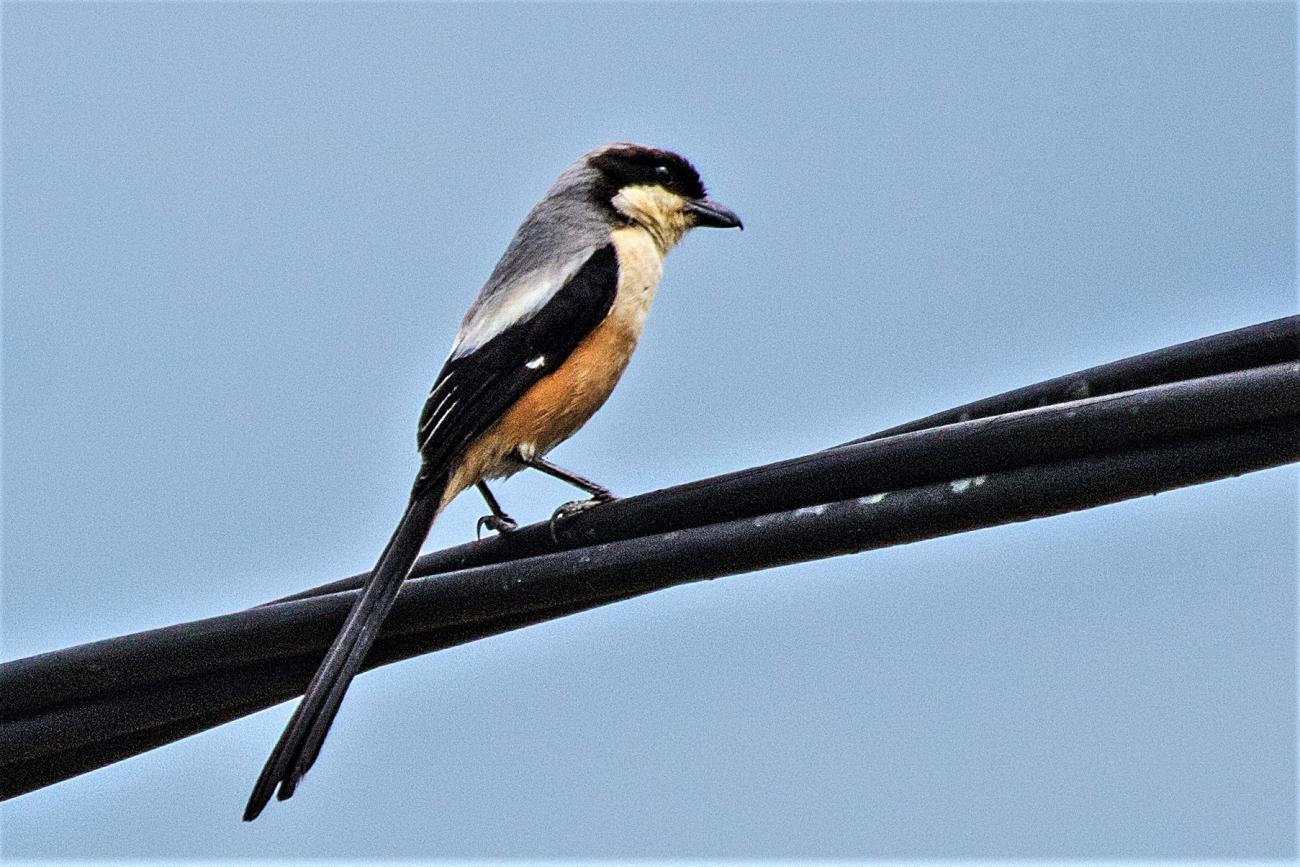Long-tailed Shrike

Lake Toba, Sumatra, Indonesia
The long-tailed shrike has a wide range across Asia from Kazakhstan to New Guinea.
Habitat
The long-tailed shrike inhabits dry, open scrub and grassland habitats and will perch prominently at the top a bush or on a wire. Temperate zone populations are often migrate south in the winter, but those in the tropics are more sedentary moving only for short distances.
Feeding
Long-tailed shrikes maintain feeding territories and swoop down from a prominent perch to take large insects, lizards, small birds and rodents. Insects are sometimes taken in flight. They maintain feeding territorie and individuals may fight over control of strategic perches.
Breeding
The long-tailed shrikes constructs a deep, loose cup nest made of twigs, cloth and hair locted in a thorny bush, tree or palm. Three to six eggs are incubated by both male and female birds. Chicks are often fed with pieces of small birds. A second brood may be raised in the same nest.
Wildfile Specials
- Long-tailed shrikes are good mimics and will imitate the calls of squirrels, puppies , cuckoos and lapwings.
- Because of thier singing, long-tailed shrikes are popular cage birds in parts of SE Asia.
- Long- tailed shrikes have been observed taking fish from streams.
- Occasionally, long-tailed shrikes are kleptoparasites stealing prey from other birds
- Like other species of shrike, they are known as butcher birds from their habit of impaling prey on a thorn bush after feeding on the head or brain.